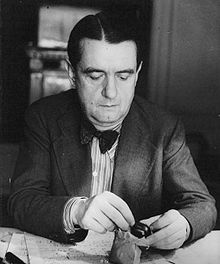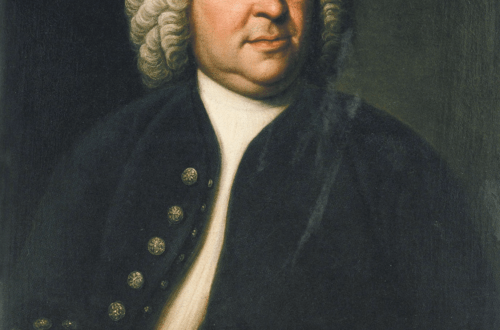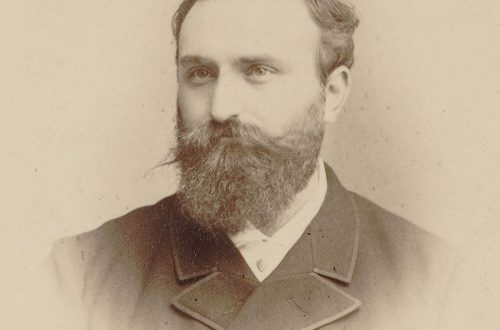
Georges Auric |
Contents
Georges Auric
Member of the Institute of France (1962). He studied at the Montpellier Conservatory (piano), then at the Paris Conservatory (class of counterpoint and fugue with J. Cossade), at the same time in 1914-16 – at the Schola Cantorum with V. d’Andy (composition class). Already at the age of 10 he began to compose, at the age of 15 he made his debut as a composer (in 1914, his romances were performed in concerts of the National Musical Society).
In the 1920s belonged to the Six. Like other members of this association, Orik reacted vividly to the new trends of the century. For example, jazz influences are felt in his foxtrot “Farewell, New York” (“Adieu, New York”, 1920). The young composer (J. Cocteau dedicated the pamphlet Rooster and Harlequin, 1918 to him) was fond of theater and the music hall. In the 20s. he wrote music for many dramatic performances: Molière’s Boring (later reworked into a ballet), Beaumarchais’s Marriage of Figaro, Ashar’s Malbrook, Zimmer’s Birds and Meunier after Aristophanes; “The Silent Woman” by Ashar and Ben-Johnson and others.
During these years, he began to collaborate with S. P. Diaghilev and his troupe “Russian Ballet”, which staged Orik’s ballet “Troublesome” (1924), as well as specially written for her ballets “Sailors” (1925), “Pastoral” (1926) , “Imaginary” (1934). With the advent of sound cinema, Orik, carried away by this mass art, wrote music for films, including Blood of the Poet (1930), Freedom for Us (1932), Caesar and Cleopatra (1946), Beauty and the Beast “(1946),” Orpheus “(1950).
He was a member of the board of the People’s Musical Federation (since 1935), participated in the anti-fascist movement. He created a number of mass songs, including “Sing, girls” (lyrics by L. Moussinac), which was a kind of anthem for French youth in the years before World War II. From the end of the 2s. Orik writes relatively little. Since 50, President of the Society for the Protection of Copyrights of Composers and Music Publishers, in 1954-1957 President of the Lamoureux Concerts, in 60-1962 General Director of the National Opera Houses (Grand Opera and Opera Comic).
A humanist artist, Auric is one of the leading contemporary French composers. He is distinguished by a rich melodic gift, a penchant for sharp jokes and irony. Orik’s music is characterized by the clarity of the melodic pattern, the emphasized simplicity of the harmonic language. His works such as Four Songs of Suffering France (to lyrics by L. Aragon, J. Superville, P. Eluard, 1947), a cycle of 6 poems to the next, are imbued with humanistic pathos. Eluara (1948). Among the chamber-instrumental compositions, the dramatic piano sonata F-dur (1931) stands out. One of his most significant works is the ballet Phaedra (based on the script by Cocteau, 1950), which French critics called “a choreographic tragedy.”
Compositions:
ballets – Boring (Les facheux, 1924, Monte Carlo); Sailors (Les matelots, 1925, Paris), Pastoral (1926, ibid.), Charms of Alcina (Les enchantements d’Alcine 1929, ibid.), Rivalry (La concurrence, 1932, Monte Carlo), Imaginary (Les imaginaires, 1934 , ibid.), The Artist and His Model (Le peintre et son modele, 1949, Paris), Phaedra (1950, Florence), The Path of Light (Le chemin de lumiere, 1952), The Room (La chambre, 1955, Paris), Ball thieves (Le bal des voleurs, 1960, Nervi); for orc. – overture (1938), suite from the ballet Phaedra (1950), symphony. suite (1960) and others; suite for guitar and orchestra; chamber-instr. ensembles; for fp. – preludes, sonata F-dur (1931), impromptu, 3 pastorals, Partita (for 2 fp., 1955); romances, songs, music for dramas. theater and cinema. Lit. cit.: Autobiography, in: Bruor J., L’écran des musiciens, P., [1930]; Notice sur la vie et les travaux de J. Ibert, P., 1963
Literary works: Autobiography, in: Bruyr J., L’écran des musiciens, P., (1930); Notice sur la vie et les travaux de J. Ibert, P., 1963
References: New French Music. “Six”. Sat. Art. I. Glebov, S. Ginzburg and D. Milo, L., 1926; Schneerson G., French music of the XX century, M., 1964, 1970; his, Two of the “Six”, “MF”, 1974, No 4; Kosacheva R., Georges Auric and his early ballets, “SM”, 1970, No 9; Landormy R., La musique française apris Débussy, (P., 1943); Rostand C, La musique française contemporaine, P., 1952, 1957; Jour-dan-Morhange J., Mes amis musiciens, P., (1955) (Russian translation – E. Jourdan-Morhange, My musician friends, M., 1966); Golia A., G. Auric, P., (1); Dumesni1958 R., Histoire de la musique des origines a nos Jours, v. 1 – La première moitié du XXe sícle, P., 5 (Russian translation of a fragment from the work – R. Dumesnil, Modern French Composers of the Six Group, L., 1960); Poulenc F., Moi et mes amis, P.-Gen., (1964) (Russian translation – Poulenc R., I and my friends, L., 1963).
I. A. Medvedeva





